March 11, 2019 - The fortress of Mamula on the small island of Lastavica is one of the most idyllic spots on the Adriatic with a dark past and a more luxurious future, but not everyone is happy.
One of the things I have learned after 17 years living in the Balkans is that nothing is as it seems. I have lost count of the number of times that I have seen something which looks amazing, fully embraced it (often publicly) and then been quietly told by locals why I should not have been so enthusiastic.
The huge Belgrade Waterfront is a case in point. When I saw it last year for the first time, I was mightily impressed. And then I heard it was sinking, apparently both financially and literally.
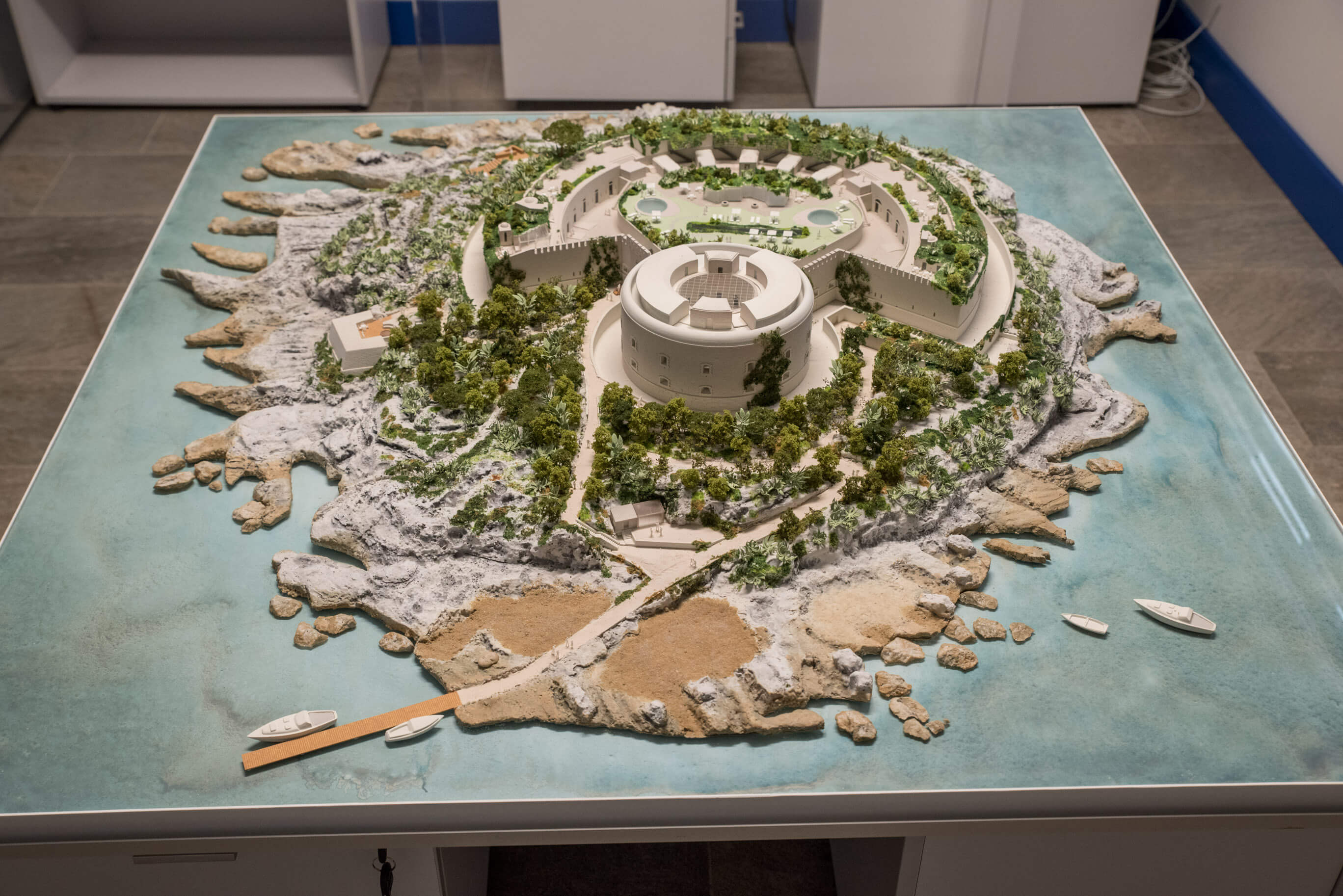
And so these days, I have learned to contain my enthusiasm a little until I figure out a little more about the situation. But when I saw the Mamula fortress on the island of Lastavica and the plans to turn the crumbling stone ruins into a luxury resort, I was more than impressed. The plans were amazing, and the end product had all the potential to be just as arresting as the Sveti Stefan Aman resort. In an Instagram world, here was another incredible location about to cement Montenegro's emerging status as a global luxury destination.
And I believe it will. And that the investors will do a very good job.
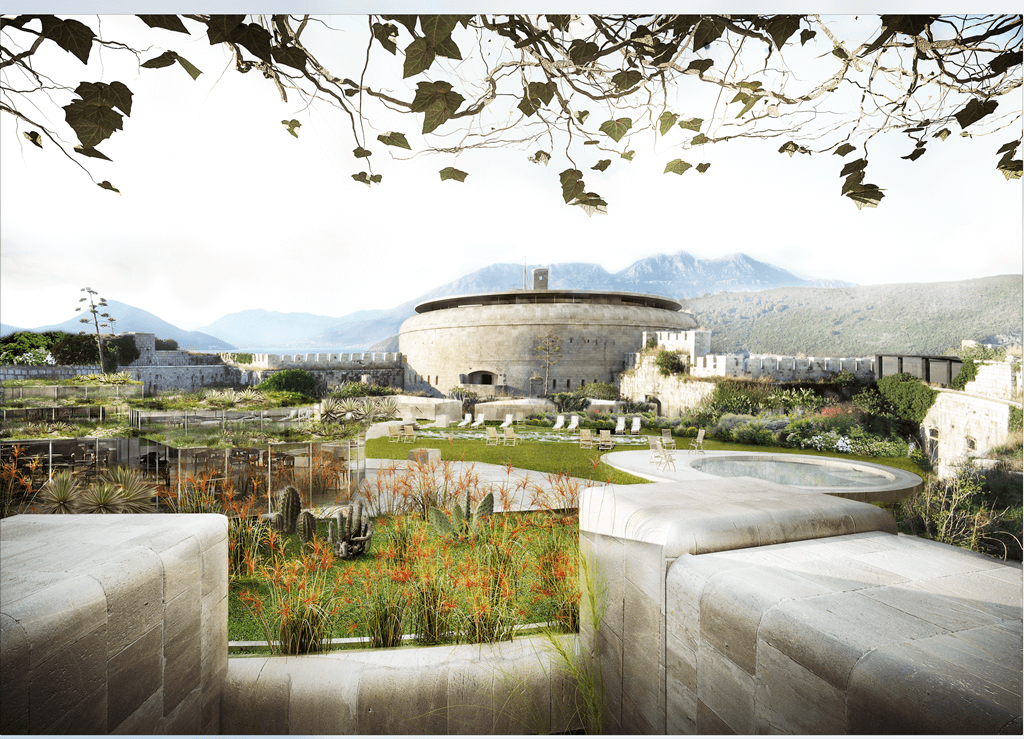
But this is the Balkans, baby, and not everything is so clean cut.
With an old fortress on the small island, I assumed that there was some kind of military past to Mamula's history, but I had no idea that it had been a former concentration camp during the Second World War. None of this was new to the international media, who covered the issue in some detail when the 49-year-lease to OHM Mamula Montenegro was announced. Here is what CNN had to say, for example. The Guardian also reported on Mamula's proposed new status, including the Montenegrin Government's response:
(Trailer for a forthcoming documentary - Mamula All Inclusive)
“We were facing two options: to leave the site to fall into ruin or find investors who would be willing to restore it and make it accessible to visitors,” Olivera Brajovic, head of Montenegro’s national directorate for tourism development, told AFP.
Brajovic said plans for the conversion included a memorial room to former inmates. Relatives of some of those detained at Mamula during the war have come together to oppose the project, which they say is inappropriate given the island’s dark past.
“To build a luxury hotel dedicated to entertainment at this place where so many people perished and suffered is a blatant example of lack of seriousness towards history,” campaigner Olivera Doklestic told AFP.
(Extract from the 1959 film, Mamula Camp)
So many issues to consider. On the one hand, the chance to transform a disintegrating cultural treasure into one of the top hotel destinations in the world; on the other, questions about using the site for hospitality given its dark past, as well as (I am sure) local concerns about access to one of the few islands Montenegro possesses should a luxury hotel be built there. Memories are still fresh, and as we reported last year, the 75th anniversary of the dissolution of the camp was marked last September.
Mamula was back in the news last week for different reasons. As previously reported, excavation works have begun and more than 4 million euro will be invested this year. Photos of the excavation works appeared briefly online last week and made it to various media before being taken down, allegedly at the request of the photographer who took the photos. The shots showed the level of excavation ongoing, which caused local NGO Bokobran to protest about the devastation of Mamula's cultural heritage, in addition to the island's change of use after its painful past.
On the surface, such a beautiful island and project, and just under the surface, so many issues. Ah, the Balkans. It seemed that local opposition was not against the investor (it is widely acknowledged that Montenegro desperately needs investment), but rather against the policies and interests of the authorities. My first question was whether the photos showing the excavation had been removed due to pressure from the development, something denied by the head of OHM Mamula PR, Dragana Becirovic in an email:
"No It was not an initiative from our side. We didn’t ask anyone to remove any photos."
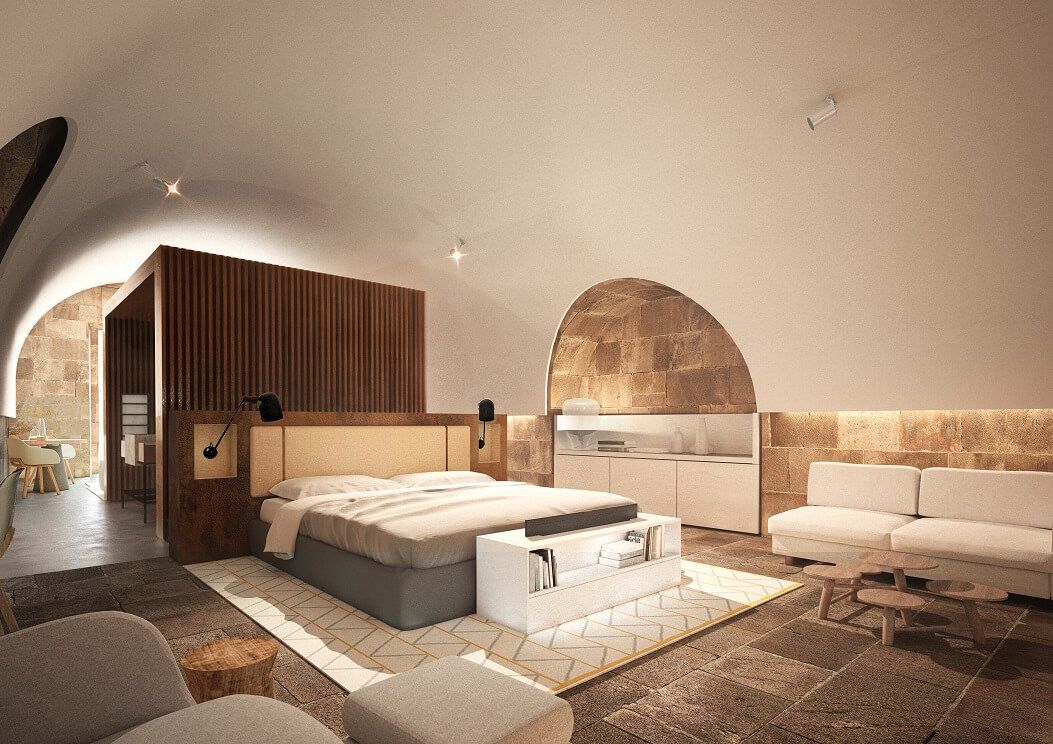
It is not my place to say who is right and who is wrong, but Mamula raises several important issues, and so I contacted both Bokobran and OHM Mamula, inviting them to contribute to this article. I am grateful to both not only for replying, but replying considerable detail. Rather than summarise and pick and choose topics, I publish their answers in full, so that you can form opinions on the full extent of the information made available. That will make this article long, but for those interested in the topic, I would rather provide all I was given. First up, Bokobran:
The Bokobran Initiative on the occasion of the latest devastation of Mamula Fort has sent an Open Letter to the Montenegrin public, and requests to the competent institutions to urgently take all measures within their jurisdiction.
As experts in the protection of cultural heritage, we would like to draw attention to the demolition of part of the walls and the excavation of the interior of the fort in depths of more than ten meters, which is touched by the adequate revitalization of the first category of cultural monuments.
As conscientious heritage protection experts and citizens aware of the importance of this cultural and historical monument, we have addressed the competent institutions. We sent the urgency to the Directorate for the Protection of Cultural Property, the Council for the Natural and Cultural-Historical Area of Kotor, as well as the National Commission for Cooperation with the UNESCO Committee, bearing in mind that the island of Lastavica with its belonging fortress Mamula stands in the buffer zone of the UNESCO Area of Kotor.
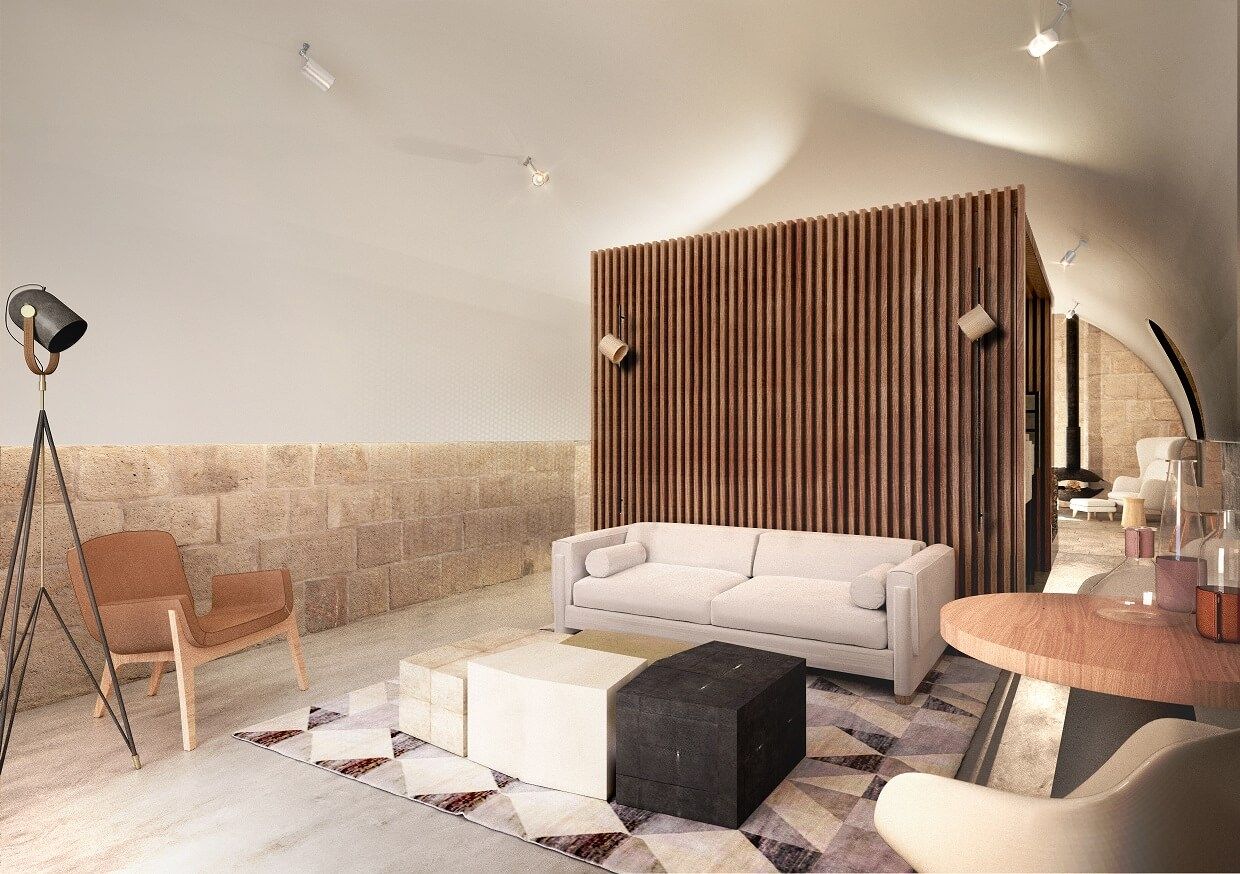
In the latest recommendations in the Report on the State of Natural and Cultural Historical Area of Kotor, UNESCO and ICOMOS experts emphasized the importance of the careful management and buffer zone of the Area. We consider this kind of devastation to show that we are unable to control the processes in the field, day by day reducing the extraordinary universal value of the Boka Bay area.
Excavations at depths of 10 meters are not an adequate approach to revitalizing this cultural asset. With such urbicidal activities, it permanently loses the extraordinary architectural value. We note that during the execution of the work, a part of the defense wall was demolished. We also asked for the inspection of the works on Mamula to the Construction Inspectorate at the Ministry of Sustainable Development and Tourism.
We are looking to investigate how much these works are being carried out by the provided permits. If these works are approved in this way by the Department for the Protection of Cultural Property, we insist on sanctioning officers who have authorized such intervention. If this is not the case, we ask that all competent institutions comply with their legal obligations and adequately process the perpetrator - the supervisor who follows the work on behalf of the Directorate for the Protection of Cultural Property, as well as the OHM Mamula company conducting the actions.
We appealed to the whole public because we believe that such treatment of cultural heritage once again places ourselves outside the family of civil societies.
We remind of the fact that we witness the transformation of the concentration camp, in which many citizens of Boka and other parts of the former Yugoslavia found the suffering in a boutique hotel with pools of high-budget clientele. We also remind that the citizens of Boka strongly opposed giving Mamula under concession for transformation into tourist content. With the help of the party's private Parliament, the Government of Montenegro succeeded in ignoring the petition of citizens and appealing to the expert public deciding to allow the masterpiece of architecture and the place of patriotism a position of the greatest shame in the recent Montenegrin history. And all this is not enough, but swimming pools and wineries are arguing for digging a grave amongst one of only seven islands along the Montenegrin coast.
Along with the already mentioned aspects of the devastation of the material and immaterial heritage on the island, Mamula was once a colony of about 5000 birds. Bokobran recorded the mortgage of seagulls at Mamula with means of deratization.
The competent institutions have not found that there is room for prosecution and possible sanctioning of perpetrators.
Our address is not OHM Mamula Company. Our address is the captive institutions of the system, which do not act in the interests of Montenegrin citizens and generations to inherit this country.
Vuk Čvoro, architect
Bokobran Initiative
Cultural Heritage Protection Team:
Maja Marović, art historian
Miloš Petričević, archaeologist
Vuk Čvoro, architect
Danijela Đukić, ethnologist- anthropologist
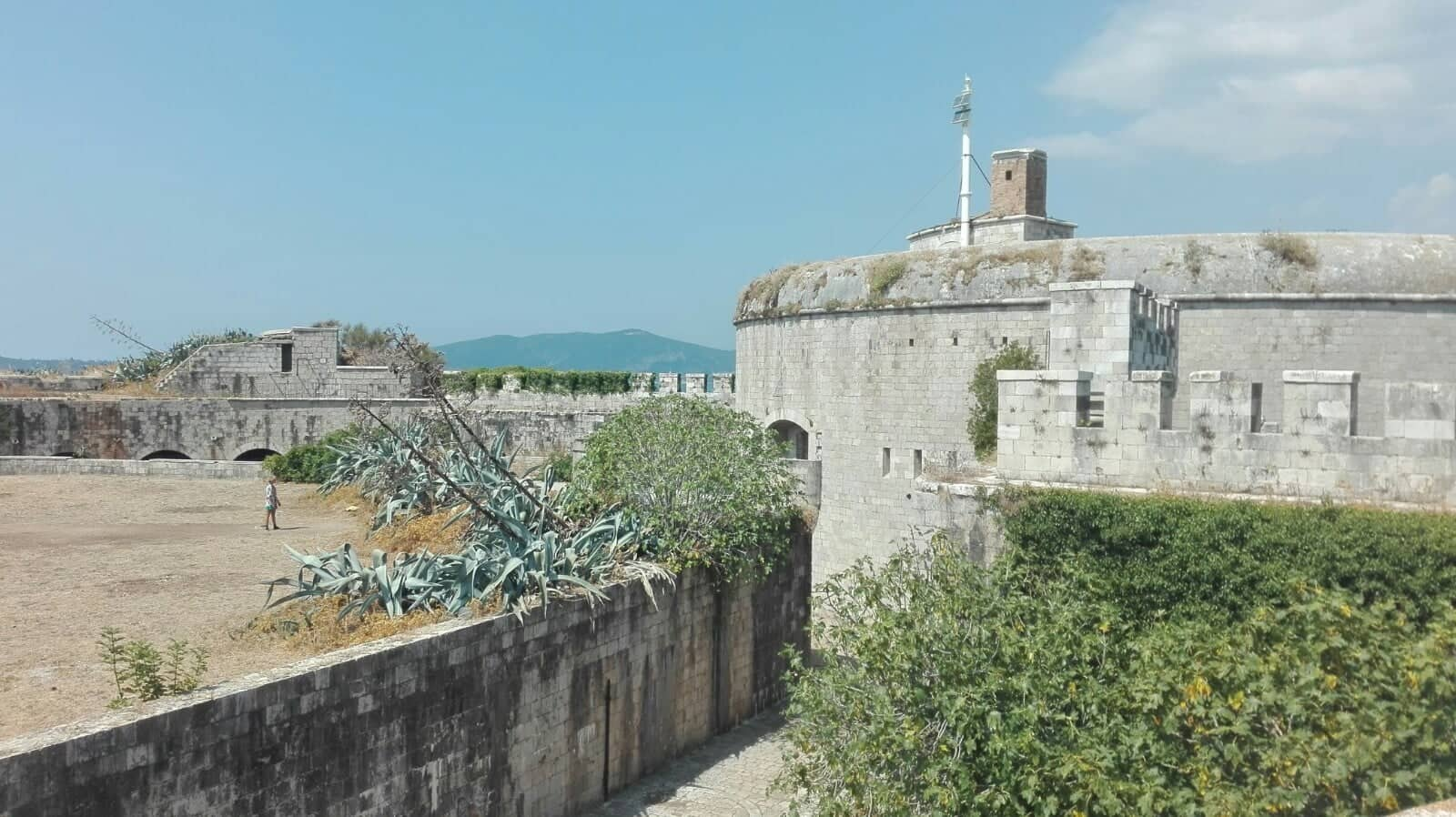
Dragana Becirovic, PR for OHM Mamula Montenegro, sent me three documents:
1. Overview of the project and ongoing works
All works on the reconstruction and adaptation of the Mamula fortress on the Island of Lastavica are in accordance with planning, building, and conservation conditions and under the supervision of relevant experts. The Mamula project is undertaken in accordance with the highest international standards for the restoration of cultural goods.
The development and renovation of Mamula, a historic and fascinating abandoned fortress which lies in the Adriatic at the entrance of Boka Bay, has been carefully planned to preserve the structural integrity of the existing buildings while restoring and renovating them into a world-class boutique hotel & spa. The historical value of the island will be recognised and honoured through the establishment of a memorial gallery which Orascom is obliged to develop as part of its lease agreement with the Montenegrin government. The project will be a great addition to Orascom’s existing project in Montenegro –Luštica Bay.
We really believe that history should be alive among us, creating jobs and prosperity and pushing the younger generation to greater reflection on their history and their past.
All preparatory works on the island have been implemented according to the procedure strictly prescribed by the Law and based on the Government's consent for preparatory works of a larger scale.
In addition, on 12 October 2017 OHM Mamula Montenegro, in its press release announcing the beginning of preparatory works, said that the works would include, inter alia, "removing the embankment on the central plateau of the island and soil digging to the ground level", so these were not unexpected or unauthorized activities.
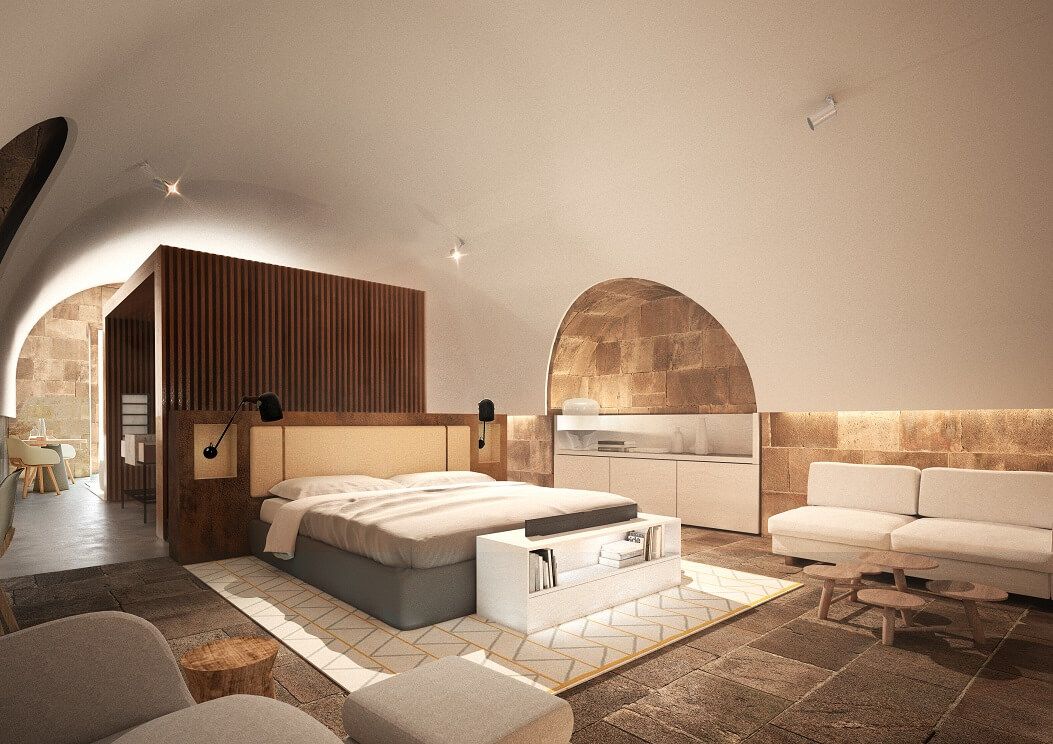
Work on the central plateau includes ground and rock material removal. After forming auxiliary facilities underneath the plateau, the embankment will be returned, and the plateau will have its original look.
The preparatory works also include fencing of the location where works will be carried out, the positioning of temporary facilities necessary for facility reconstruction, the supply of materials and equipment, making temporary roads for supply network, the installation of sanitary facilities and the cleaning of the site from weed and plant that endanged the stability of the existing construction, in accordance with the consent for preparatory works and conservation conditions for this site, issued by the Ministry of Culture.
Planned works also include the storage and collection of original structural elements and stone sculptures that will be subsequently installed at the appropriate positions on the facility, removal of the embankment on the central plateau of the island and soil digging to the ground level, construction and installation of an autonomous construction power and water supply, site for and preparation of a temporary landfill for construction waste etc.
The revitalization project of the Island of Lastavica with the Mamula fortress will include a luxury boutique hotel & spa with 34 rooms, a memorial museum, four hospitality facilities, a shop, swimming pools, a non-motor water sports club. Access to the site will remain open.
The restoration design has provided for making maximum endeavours in environmental and body of water protection, i.e. two small beaches will be preserved; all wastewaters will be collected and treated, and, by making use of contemporary building techniques, heating and cooling needs will be reduced.
Orascom always implements only the projects involving low site occupancy indices, low-carbon emissions and restricted building height, all with the aim of preserving landscapes and natural areas.
Global leader in the development of integrated tourist destinations, Swiss Orascom Development Holding, which is developing €1.1bn worth Lustica Bay project in Tivat, has signed a lease agreement for the Island of Lastavica with the Mamula fortress for 49 years. Through its subsidiary company in Montenegro, OHM Mamula Montenegro, Orascom plans to rebuild the island and the Mamula fortress, preserving the landscape and architecture, and securing the protection of the historic value of the site.
2. An article from national newspaper Vijesti on impressions of a November 2017 Mamula visit
A look at Orascom’s plans for the reconstruction of ‘Mamula’
LOCAL EXPERTS HAVE THEIR SAY WHEN IT COMES TO FUTURE LOOK OF MAMULA
‘Vijesti’ had an exclusive opportunity to take a look at the preliminary concept, i.e. preliminary design that Orascom is preparing together with local and foreign experts
Austro-Hungarian Fortress ‘Mamula’ on the island of ‘Lastavica’ at the entrance of Boka Bay, which is under long-term lease of the Swiss-Egyptian Consortium ‘Orascom’, will be carefully restored with the utmost respect for all the architectural-conservation profession standards and with the decisive influence of local experts.
So at least they claim at Orascom's daughter-company OHM ‘Mamula Montenegro’, which the company registered in Herceg Novi for the purpose of implementing this Project. ‘Vijesti’ had an exclusive opportunity to take a look at the preliminary concept, i.e. preliminary design that Orascom is preparing together with local and foreign experts
As they say in Orascom, ‘Mamula’ will be the pearl and the biggest attraction that will further position their project of the new tourist town of Luštica Bay at the global stage. This resort is being built by the company of Egyptian businessman Samih Sawiris at the Tivat’s part of the nearby peninsula of Luštica. Mamula project will also position the entire country of Montenegro as a tourist destination with extraordinary offer.
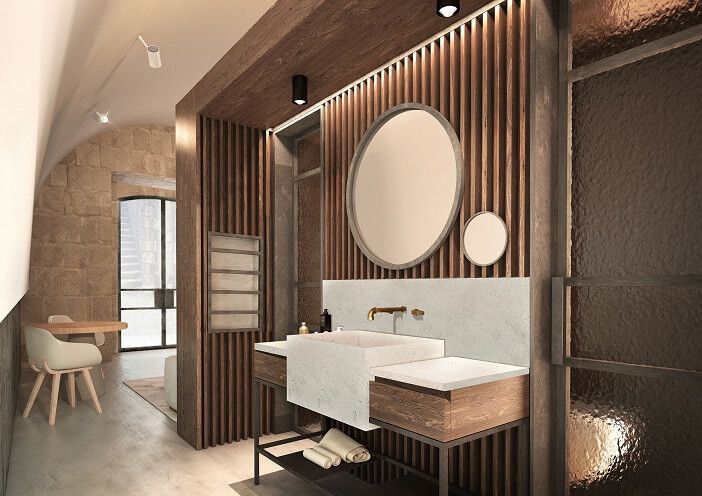
People from Orascom are saying that, ‘Mamula is so unique that we didn’t think twice whether to enter into this financially utterly unfeasible project, in which we will make no profit, but instead certainly lose money. However, this is the price we are willing to pay in order to preserve this architectural-historical pearl and to turn it into something that will be world-renowned and become a landmark of our project at Luštica’. They are also recalling that they have already reconstructed similar valuable local cultural heritage site in the vicinity of the famous El Gouna resort in Egypt.
The Government's decision to lease the island and fortress to a foreign investor for 49 years has met resistance from the opposition parties, but also from a bigger part of the general public in Boka Kotorska, which is particularly emotionally linked to Mamula.
According to Orascom plans, the island and fortress will be carefully restored and converted into a small hotel with a range of related amenities and attractions, and shall be open to public non-stop.
Conservation, Design and Consulting Studio ‘Projector’ and its leader, Architect-Conservator Katarina Nikolić from Tivat, are engaged in the Project. They have produced the main design and the base study as well as a report on survey results. In addition, ‘Projector’ is working on a conservation and restoration project, which will be part of the main design, soon to be submitted to the Montenegrin Cultural Heritage Management Agency.
"Throughout the development of the main design and the base study, ‘Projector’ company has engaged, various consultants and other companies’, said Dragana Bećirović PR Consultant of OHM Mamula Montenegro company.
Conceptual design of the exterior and interior were made by MCM Design from Portugal, which, according to the large model recently delivered to Montenegro, has done a good job.
Looking at the model (except for the fact that one cannot see the gray colour of stone from which the fortress is built), only experienced eye of someone living in Boka can notice small visual difference in relation to the actual look of Mamula. The design has definitely done away with large pools, which according to some older computer simulations were supposed to ‘sink’ the entire internal yard of the fortress. The Lastavica coast will remain virtually untouched, and only the existing boat mooring will be slightly extended and enlarged.
Instead of the three large pools, previously planned to be built at the elevated platform of the inner part of the fortress, where its main armament once stood, three much smaller pools are planned- one fresh and the other with salty water and the third –special one in which water will be purified by plants.
At the fortress’s tower, some hotel rooms will be located, but the tower whose open yard will be covered by a glass roof with a promenade, is primarily intended for a spa- centre. Most of the rooms (maximum up to 33 hotel rooms) will be located in dungeons and ammunition rooms of the Fortress Ring, while one of the two larger buildings at the beginning of the 96-square-meter meringue platform is intended for a museum, which will be telling of a rich and complex history of the fortress. In the remaining space there will be two restaurants, two bars and a wine bar, and the resort will also include a water sports club.
On the island outside of the Fortress, without damaging its natural relief, several sunbathing platforms will be formed, and the beach will be developed near the only pier on the northern side of Mamula.
‘There will be no casino on the island and it has never been in our plans. It is quite clear that the island and the fortress will not be closed to the public. On the contrary, for someone who plans to have a hotel, museum, restaurants and cafés, people’s attendance is a must. We said it many times and we shall be repeating it as many times as necessary that Mamula will remain open to public 365 days a year. This is also regulated by a contract with the Government of Montenegro,’ Bećirović told us.
The only significant, but still just potential difference with respect to the current look of the fortress, which is being considered by Orascom and their consultants is the possibility of building two smaller annexes, from easily removable materials, at the top of the tower, i.e. in the part of the southern rampart above the position of the former main canon battery. ‘We have planned six additional rooms on the tower, which are embedded and do not disrupt its architectural entirety. These are temporary structures whose construction can be removed at any time. In the same way, additional rooms are planned on one part of the rim, across the tower, which will have a ‘green roof’,’ Bećirović explains.
When positioning of these structures in relation to the (non) -disruption of the Mamula landscape’s visibility, both from the land and sea, designers and architects have an advantage due to the fact that all the horizontal roof surfaces on the fortress are covered by a thick layer of earth and sand that were used to depreciate the grenade strikes that the enemy was firing on the fortress. This material will not be removed, and with its green areas, shall continue to underpin the specific appearance of this unique building.
The entire autochthonous plant life of the island will be preserved and further improved, so that Mamula will still be specific for its numerous agave trees and slender Mediterranean herbs, including its characteristic big pinewood that has been growing for decades on the south-eastern end of the fortress rampart. All the wells and reservoirs on the island will be preserved, while on the west side of the tower, hidden by natural relief and vegetation, there will be the most modern desalination plant for seawater, which will provide the supply of all facilities with potable and technical water. A sewage treatment plant will be installed, which will then be used for irrigation of greenery and other needs that can be satisfied with this technical water.
Seif Estefanous, one of the best ‘Orascom’ engineers, has been working for a long time on extremely complex infrastructure issue on the island. This Egyptian expert has a particularly huge experience in the field of desalination, waste water treatment, rainwater collection techniques and the like.
‘Mamula is definitely the most challenging project I'm facing, but we will do absolutely everything to protect the fortress’s beauty and its uniqueness in the best possible way, and here we are developing an environmentally viable system, especially from the standpoint of waste water treatment,’ Estafanous said.
He and architect-conservator Katarina Nikolic do not hide the fact that, as they explore Mamula and archival material about the construction of this fortress, which started in 1853, they are increasingly fascinated with the skills and craftsmanship of Austro-Hungarian military engineers and then builders who have used, in a very intelligent an sustainable way, many natural features of the relief, climate, and material from which they have built the fortification. Thus, for example, the rainwater collection system on the island is still working, which, after filtration, is used as drinking water, and one and the same technical water has been used multiple times even 150 years ago.
At the time Mamula was built, it was an exceptionally high-tech structure, and many of its unique features will still be of great benefit to us when it is converted into a hotel. It is fascinating how these people have designed it and built it so well,’ Estefanous said, adding that the floor channel system allows to easily implement electrical and plumbing installations and its thick stone walls and volts with natural ventilation of the former ammunition chambers, practically completely eliminate the need to install air conditioning systems in hotel rooms.
OHM, Mamula Montenegro company is planning to deploy a submarine cable that will supply Mamula with electricity once the new Klinci sub-station becomes operational, and sufficient electricity at Luštica and Arza is secured.
Meanwhile, along with the work on the design, preparatory works are ongoing: the ‘Primavera’ company from Herceg Novi is conducting an analysis of the green fund on the island and also producing a study on preparatory works - the repair of the mole and the access road, for which the main design is done; the clearing of the former hiking trails is done by ‘Nikmar’ company from Tivat, while the project of landscape design and lighting is managed by ‘Gaia Chaillet Giusti del Giardino’ from Italy.
"The main reconstruction works should begin next year. In the meantime, on July 20, we got permission for the preparatory works and started cleaning hiking trails on the island, cleaning the invasive vegetation in and around the fortress, and we started the reconstruction of the dock and the access road to the fortress. We have cleaned two reservoirs in the fortress, and excavated at least 6 cubic meters of stones, which was then measured and deposited. We identified locations of the fortress to which this material belonged and everything will be returned to its original place,’ said Bećirović.
Their plan is to complete the whole Project within 18 months as of the date they receive construction permit
On the question, can they complete the entire Project on the island within just 18 months, OHM Mamula Montenegro says ‘We are working simultaneously on design and preparation of documentation, obtaining appropriate approvals and preparing the site. Once the main design is completed and revised and we start working, we think that we will be in a position to meet the agreed deadline’.
‘From the day, we obtain the construction permit, or according to the new Construction Law, we apply for construction works, and we get electricity connection on the shore, our obligation is to start works within nine months and from that time onward the deadline for completion of the works is 18 months. Orascom's Montenegrin daughter company also says that, ‘We believe that we will complete all the works and open the facility within that timeframe,’ reminding us that it is the first project of the kind in the country, that all the works are to be implemented on the island that is a mile away from the coastline, that there is no infrastructure, and on top of that that they are engaged in reconstruction and adaptation of the protected site.
They will bring 80 to 100 new jobs
The Mamula long-term lease agreement was signed on February 2015. Orascom, which was selected as the best bidder, got the island and the fortress for a period of 49 years, for €1.5 per square meter per year for land lease, and € 0.9 lease for the aquatorium, which is 50% more than what the tender asked for in terms of the minimum required amount. Announced investments are of € 15 million minimum.
OHM Mamula Montenegro claims, that, ’Once the reconstruction is completed the preliminary Business Plan estimates the need for at least 80-100 employees on the island. During the construction, and especially after the start of operations, Mamula will definitely trigger cooperation with big number of entrepreneurs and companies who will be servicing the resort - such as supplying fresh fish and seafood, general food items, maintenance of green areas, taxi transport and others’.
3. A 2018 press release on the visit of European fortress experts
European Fortress Experts explore Fortress Heritage of Montenegro
Pilot Study Tour in the frame of FORTE CULTURA® to Montenegro from 23rd and 26th May 2018
From Wednesday, 23rd until Saturday, 26th May 2018, a pilot fortress study tour under historic and touristic aspects will be held at Kotor, Budva and Podgorica in Montenegro. The twelve participants are fortress experts and members of various national fortress societies and monument protection organisations from Germany, Switzerland, The Netherlands, Belgium and Ukraine.
The visit is part of a study tour between Sarajevo in Bosnia Herzegovina and Podgorica in Montenegro. The aim and purpose of the tour is to get to know different types of fortifications, to exchange professional experiences among professional colleagues, to examine further cooperation, in particular with interested people of three countries on the Balkans and other European countries, as well as to submit proposals and possibilities for the enlargement of the European cultural route FORTE CULTURA® to South-East Europe.
The tour is organized by Dr.-Ing. Hans-Rudolf Neumann. He is Deputy Chairman of ECCOFORT reg.ass. (European Cooperation Center of Fortified Heritage) and also a member of ICOMOS Germany. He is a co-founder of the European cultural route of fortified monuments FORTE CULTURA® (www.forte-cultura-project.eu, www.forte-cultura.eu).
FORTE CULTURA® was founded in the years 2012 - 2014 and was a co-operation project of eight European countries of Central Europe. Meanwhile the culture route consists of more than 30 partners and participants. FORTE CULTURA® presents the „Architectura Militaris“ as unique fortress architecture with its very diverse tourist offers under a uniform brand. Fortified monuments have a big tourist potential, but only a few benefit from that. 80% of the fortified monuments are lesser known, not present on the tourism market, underfinanced and burden the communal budgets.
The main aim is the opening of historic fortifications for tourism development and better marketing on European level. FORTE CULTURA® is a main partner in the European Cultural Heritage Year 2018 and has opened the European Fortress Summer on 24th April 2018.
Especially interest will be shown to the Venetian fortifications as part of the UNESCO World Heritage List, Lastavica island with Mamula fortress, some Austrian-Hungarian fortifications and Fort Kosmač near Budva.
----------------------------------------------------------------------------------------------------------------
On Thursday, 24th May 2018, the group visited during a bay cruise Lastavica island with Mamula fortress from outside. The group got an impression about the current situation of building condition and natural surroundings. After visiting plans and the model of the project “Mamula Island” in Lustica Bay Office, members of the group admired the careful planning of the whole project, especially the provided reversibility of new architectural constructions. A new, adequate function of the old fort is always a guarantee for the surviving of the historical heritage. However, it is and remains important that the old building substance will be recognizable. The group was impressed by all researches done before of the start of building restoration, because careful researching and planning helps to economize time and money. Also the group expressed its hope, that all aspects resulting from the sad history of the Second World War, will be considered under a memorial implementation. Mamula Island Project can be a future highlight in the European Culture Route FORTE CULTURA®, if it will be possible to consider all planned aspects in the upcoming realisation. The members of the study group expressly welcomed the fact that the fort, even after its completion in its new function, is open to the public and accessible to everyone.
All works on the reconstruction and adaptation of the Mamula fortress on the Island of Lastavica are in accordance with planning, building, and conservation conditions and under the supervision of relevant experts. The Mamula project is undertaken in accordance with the highest international standards for the restoration of cultural goods.
More on this story as we get it, but I will leave you to form your own opinions. To see how Mamula will look when finished, check out the official website.







